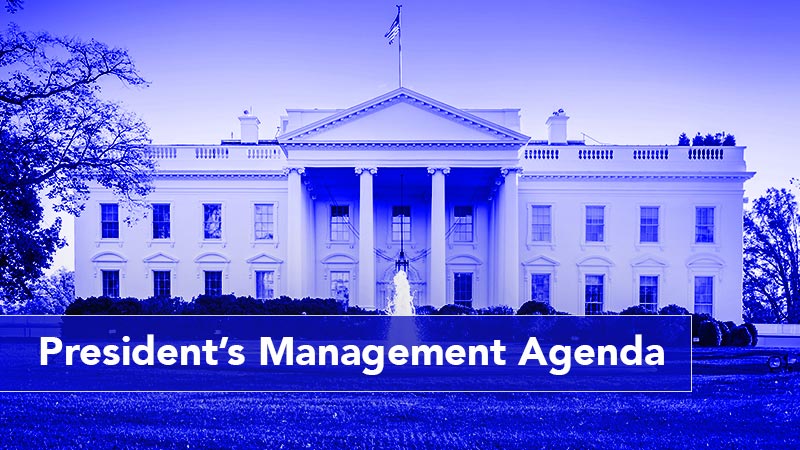
The Office of Management and Budget (OMB) provided an update today on its progress toward the President’s Management Agenda’s (PMA) priority to strengthen and empower the Federal workforce.
In an update to Performance.gov today, OMB said it has built a cross-agency team to advance each of the PMA’s three priority areas, with cross-functional representatives from a variety of agencies participating. The workforce priority area leaders are Office of Personnel Management (OPM) Director Kiran Ahuja, Deputy Defense Secretary Kathleen Hicks, and Labor Deputy Secretary Julie Su.
The workforce priority area – identified by OMB earlier this year as one of three primary PMA goals – serves to advance the Biden-Harris administration’s vision to have the Federal government be a model employer, operated by a talented, diverse, and engaged workforce.
OMB outlined progress on its four strategies to strengthen and empower the workforce. The strategies include:
- Attracting and hiring “the most qualified employees, who reflect the diversity of our country, in the right roles across the Federal Government”;
- Making “every Federal job a good job, where all employees are engaged, supported, heard, and empowered, with opportunities to learn, grow, join a union and have an effective voice in their workplaces through their union, and thrive throughout their careers”;
- Reimagining and building “a roadmap to the future of Federal work informed by lessons from the pandemic and nationwide workforce and workplace trends”; and
- Building “the personnel system and support required to sustain the Federal Government as a model employer able to effectively deliver on a broad range of agency missions.”
For the first strategy, OMB said it is focused on attracting and hiring “quality candidates and reduce any systemic barriers by improving the hiring process for all applicants, hiring managers, and human resources (HR) specialists.” Agencies are currently exploring the applicant experience, recruitment efforts, and aligning these efforts with ongoing initiatives – such as promoting diversity, equity, inclusion, and accessibility (DEIA).
OPM outlined initial milestones it has completed, which include issuing a Bipartisan Infrastructure Law Agency Hiring Social Toolkit, a multi-agency hiring action for Human Resource professionals and grants management specialists, Federal Personnel Vetting Investigative Standards, and Skills-Based Hiring Guidance.
Additionally, OMB and OPM said they are focused on early career hires and internships. The agencies are “working to surface leading practices with paid internships and early career hires, including efforts to include and support underserved and underrepresented communities.”
As for the second strategy, agencies are working to “engage and empower all employees to create a more inclusive and equitable work environment.”
Progress so far includes agencies developing draft DEIA strategic plans, and equity plans. OPM also hosted the inaugural Employee Resource Group Summit and launched an updated Federal Employee Viewpoint Survey [FEVS] for 2022 with DEIA questions.
Agencies are also exploring career development pathways by examining challenges, exchanging promising practices, and looking for ways to make the process of applying for the Senior Executive Service (SES) easier. Additionally, agencies are focusing on employee well-being and using “the full suite of available tools, including pay and benefits, to encourage public service and retain dedicated employees.”
The third strategy only has one focused goal, which is “to achieve agency missions and serve the American people by investing in its people, technology, and space.” Agencies are working on this goal by identifying new skills needed for mission needs, integrating technology, and modernizing and optimizing their workspaces.
OPM has already developed and released FEVS remote work and telework questions, in addition to adding a new USAJOBS remote location feature. Later this fiscal year, OPM plans to “continue development of telework and remote work data collection and analysis,” among other things.
Finally, the fourth strategy’s goals look to set OPM up as a leader in Federal human capital management, build out tools to support government-wide and agency data-driven workforce decisions, and build a modernized Federal HR workforce.
To fulfill these goals, OPM has already created and filled a Chief Transformation Officer position, received pre-designation by OMB as the Human Resources Quality Service Management Office, launched a Human Capital Data Working Group, as well as an Elevating HR Working Group.
